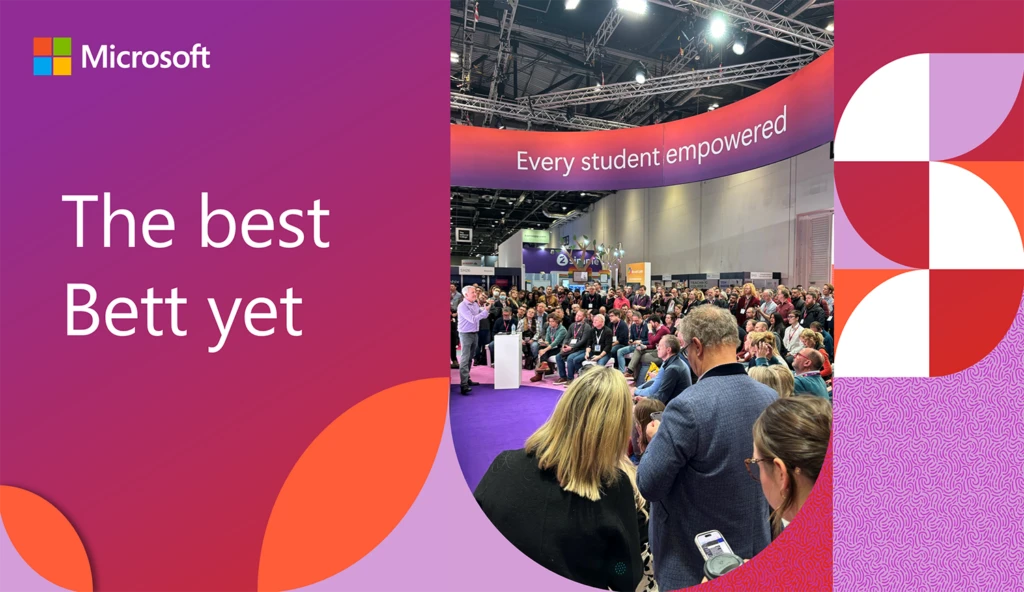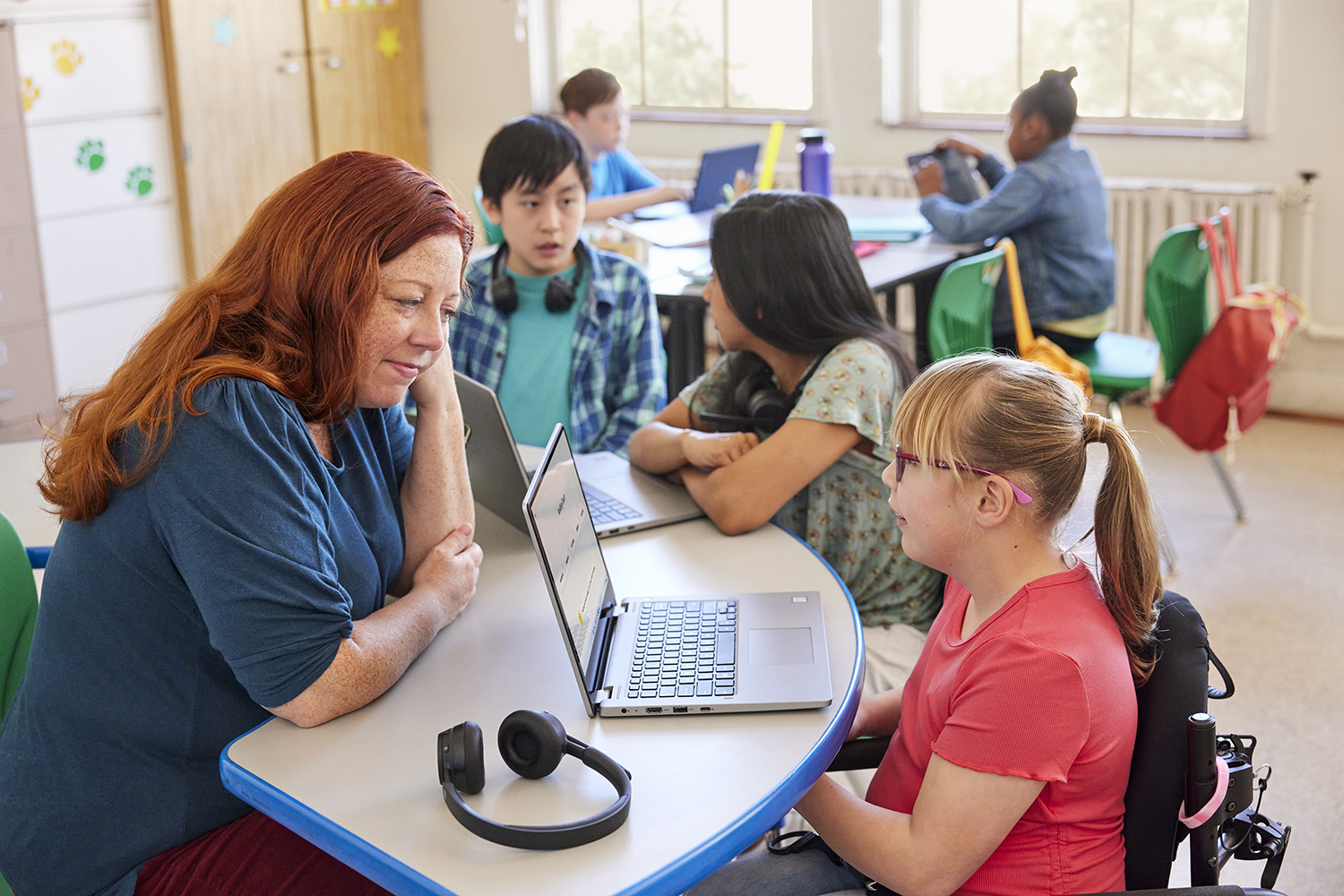The Bett conference has been showcasing innovative edtech solutions since 1985 and shows no sign of slowing. This year’s event attracted over 34,000 attendees from more than 120 countries. The 38th annual Bett show—the largest education technology exhibition in the world—was held January 24-26, 2024, in London, England, and I had the privilege of attending and meeting with many of Microsoft’s customers: everyone from educators, parents, and students to education and technology leaders from across the globe.

This year we were thrilled to be joined by Jaime Teevan, Chief Scientist & Technical Fellow at Microsoft, to talk about her research on AI in the workplace and discuss her recommendations for the best ways to leverage AI technologies.
And that was the perfect kickoff for Bett 2024, because AI—perhaps unsurprisingly—was the talk of the show.
Strike a pose
Right from the get-go, visitors to the Microsoft stand on the show floor were captivated by Microsoft Designer and the power to use AI to build their own avatars.

For those not able to attend in person, visit aka.ms/SeeYourselfinAI to try out the prompt for yourself!
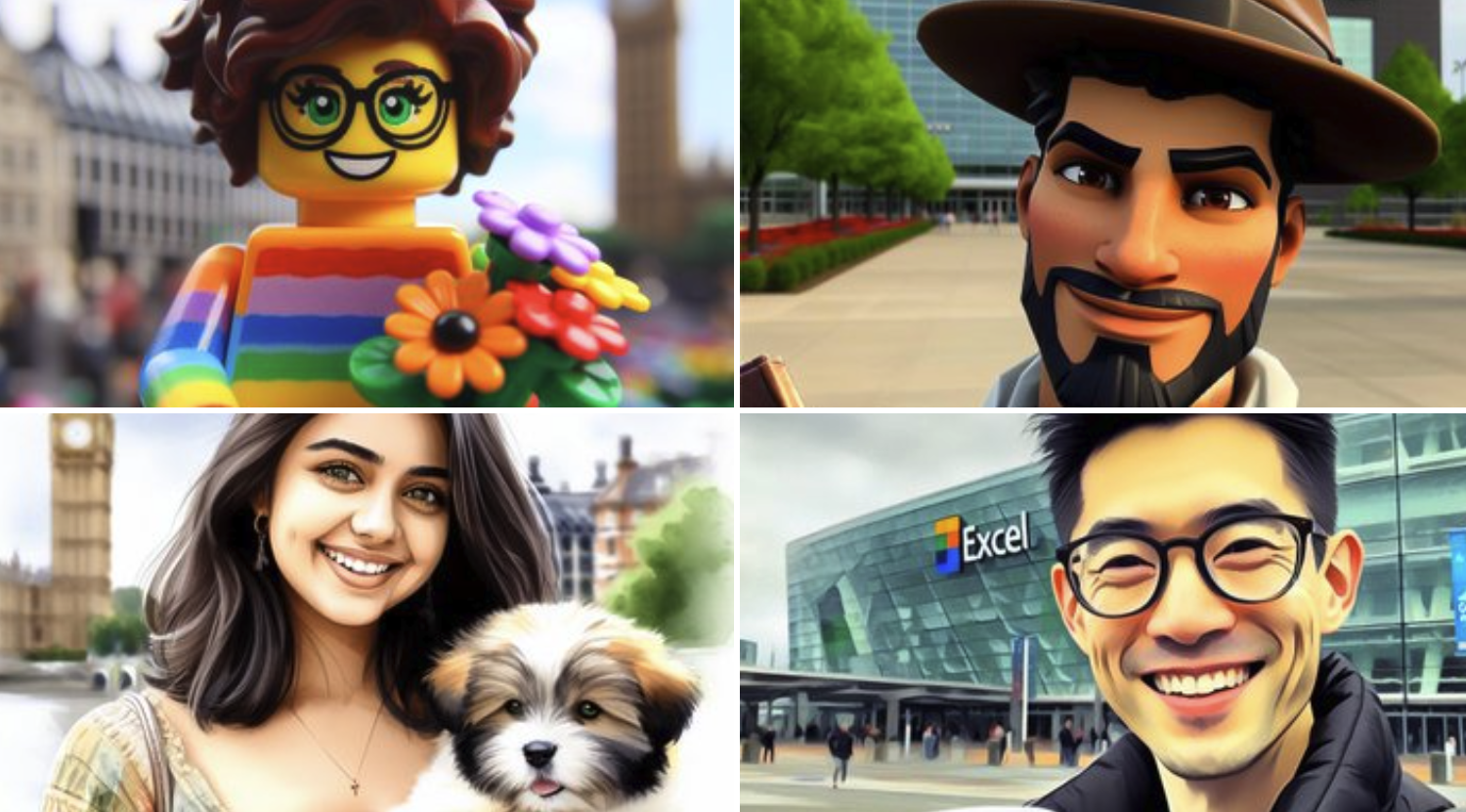
Keynote to success
At this year’s Bett there were SO many ways to be inspired by Microsoft! Engaging product demos? Check. Expert-led sessions? Also check. The latest on AI in our Microsoft Learn Live Classroom? You got it!
As I mentioned earlier, kicking things off for Microsoft was Jaime Teevan, with her Thrive with AI: Lead like a scientist keynote. She provided her expert perspective around AI and the fundamental shifts it will bring to learning.
Citing the LinkedIn Future of Work Report, Jaime shared that—though more than half of a teacher’s job involves specialized skills that need to be performed by humans—nearly half of teacher skills support tasks where AI could enable greater productivity (such as lesson planning and curriculum development). What everyone wants to know is: can AI really help with these challenges? Will it transform work and how?
Early research with Microsoft Copilot says yes, with 72% of initial users agreeing that Microsoft Copilot helped them spend less mental effort on mundane or repetitive tasks, 68% saying it improved the quality of their work, and 77% saying they don’t want to give it up! I want you all to imagine, what could you do with that time back? How might this allow for more focus on what matters most, like spending time with your students?
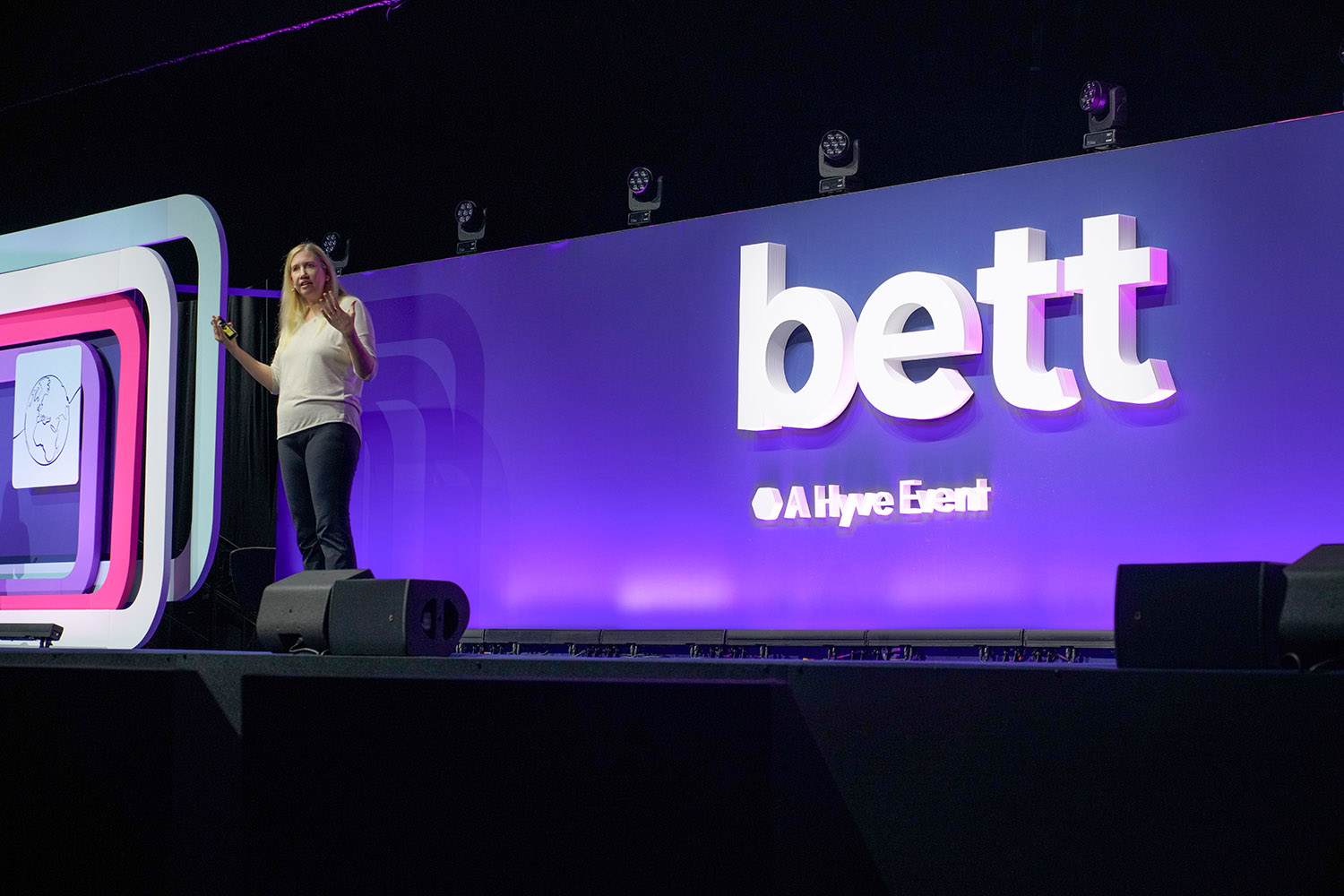
Jaime cited an important new study—Math Education with Large Language Models: Peril or Promise?—that revealed the learning benefits of LLMs (Large Language Models).
In one of the first randomized experiments on LLMs and education, Microsoft Research and Harsh Kumar from the University of Toronto found that LLM-based explanations positively impacted learning relative to seeing only correct answers. This is largely due to the intention they built this experiment around and the design choices they made, to have LLMs serve as a coach, to act as tutors that don’t just provide answers, but are specifically pre-prompted with customized instructions. And what is so exciting about all of this is that we already have incredible tools today that will only be further enhanced by generative AI.
Achieving more with Microsoft Education

Some other exciting Microsoft Education announcements at Bett included:
- Microsoft Copilot with commercial data protection will be available to all faculty and higher education students ages 18 and above when signed into their school accounts starting later this week. There are so many ways educators can use Copilot to save time and energy!
- Reading Coach is now powered by generative AI to fuel student agency and motivation with dynamically created stories that adapt to their reading level and individual challenges. It’s also available as a standalone app, providing personalized reading fluency practice for free as a Windows application and a web app to use in the classroom or at home with a Microsoft account.
- Microsoft Teams for Education updates include things such as the ability to use generative AI to create rubrics and instructions in Assignments. The educator always has the choice and can generate different options, and—after the content is created—can always make further edits and updates to the content.
- You can also use generative AI to create modules in Classwork. Now educators can get assistance creating a course outline and drafting modules and descriptions based on the subject, student grade level, and class learning objectives.
- Microsoft Loop—a flexible, AI-powered collaboration app that can help you think, plan, and create together—is now available for Education customers.
Buddy up to PowerBuddy™
PowerSchool—the leading provider of cloud-based software for K-12 education in North America—announced the launch of PowerSchool PowerBuddy™, powered by the Azure OpenAI Service. With PowerBuddy, students receive on-demand assistance and tailored pathways. Teachers can generate lesson plans and personalize homework at scale. Parents can inquire about their child’s academic performance. And administrators can democratize information for decision-making.
“PowerBuddy helps each child cultivate a genuine passion for learning, driven by the intentional design of safe, supportive, inspiring, and tailored experiences using AI,” said Shivani Stumpf, Chief Product and Innovation Officer at PowerSchool. PowerBuddy is being piloted now and will be available for the 2024-2025 school year. Watch the video PowerSchool PowerBuddy™, An AI Assistant for Everyone in Education to learn more.
Kahoot! had its own AI-related announcement: the PDF-to-kahoot generator! This tool leverages the Azure OpenAI Service to transform static PDFs into high-quality interactive kahoots, injecting excitement into each student’s learning experience and helping them to foster a deeper understanding of the curriculum-aligned material. The collaborative nature of Kahoot! also adds an element of friendly competition to the learning process!
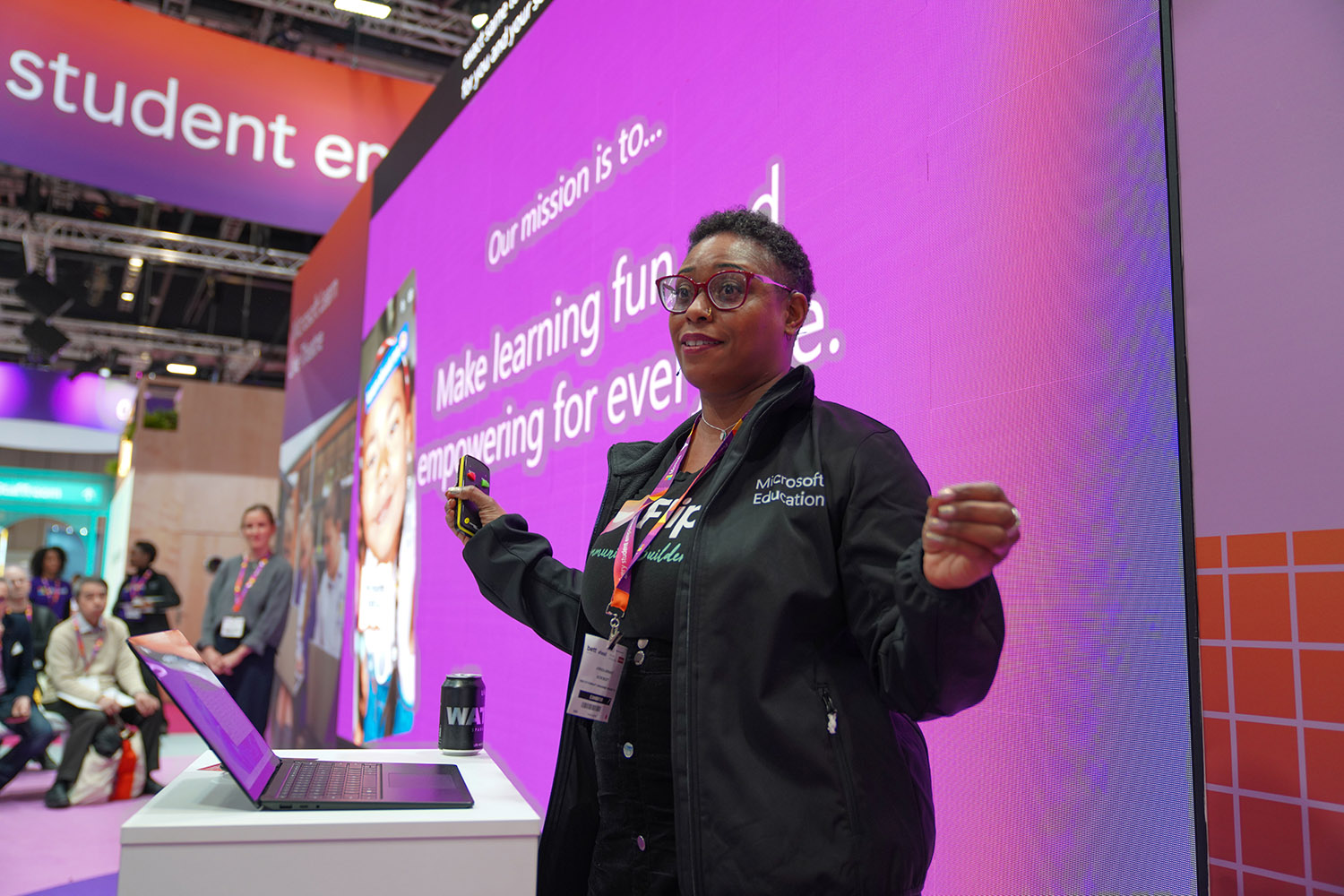
Jornea Armant, Head of Community Engagement for Microsoft Flip, was also on hand to discuss what assessment means in this era of generative AI, focusing on the power of Flip—a no-cost video assessment tool—and Microsoft Copilot, as tools for adapting assessment practices for future-ready classrooms.
Re-imagine the possibilities!
To build upon all this Bett excitement, be sure to join us for Reimagine Education on Wednesday, March 6, 2024, to learn more about how AI is transforming the world of education. Select the time that works best for you and save it to your calendar—either 9:00 AM PT (UTC-8) or 6:00 PM PT (UTC-8)—and join us for insights from global education innovators who will share best practices on education equity, security, and workforce readiness in the era of AI. At Microsoft, we are committed to making sure AI systems are developed responsibly and that equitable opportunities are created for all students, in the classroom and beyond!

